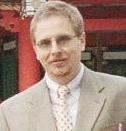 |
USUARIO PUB: askmaxim |
Informacion Personal | Primer nombre:
Maxim | Segundo nombre:
I | Apellido:
Buyakov | Fecha de suscripcion:
12/05/2008 | Direccion de correo:
Debes iniciar sesion para ver! | Website:
http://www.askmaxim.com/ | Genero:
Masculino | Perfil:
Maxim Buyakov, Founder and President of MAXIM LLC
[email protected]
Mr. Buyakov graduated the Mathematics Department of the Moscow State University in 1991, the Civil Engineering Department of the State University of New York in 1995, and accomplished an intensive course of the Japanese language at Brandeis University, USA, in 1998.
Before founding MAXIM Co., he worked for Parametric Technology Corporation (USA), Elysium Co. Ltd. (Japan), Samsung Electronics Research Center (Moscow, Russi |

|
|
| Titulo de articulo: Translation Memory, Glossary Management, SDL Trados | Fecha de creacion:
12/05/2008 | Ultima actualizacion:
12/05/2008 | Idioma:
English | Categoria:
Translation | Rango de TranslatorPub.Com:
9 | Vistas:
6613 | Comentarios:
1 | Valoracion:
2, Puntaje promedio: 6 (10 Max)
| Texto:
Translation Memory is a big file that contains all translation work entered in it by a human translator or a group of translators. It works as follows. When translating a specific term, the translator first looks up the contents of an existing translation memory file (if any) and, if appropriate translation precedents are found, makes sure to use the same translation term. For example, when translating the German 'Wagen' into English, you may use 'car', 'vehicle' or 'automobile'. If there is an appropriate precedent of translating the term in the translation memory, you can figure out what particular word to use. Moreover, entire sentences from a translation memory may be reused by translators, with or without modifications. In many real-life situations, documents and their translation counterparts go through a lifecycle of modifications. Some sentences of the source text may remain unchanged, and some may undergo just slight changes. Having a translation memory file would help maintain uniformity of the translation and increase productivity. If no appropriate precedents are found in the translation memory, the translator adds the new source segment (term or sentence) and its translation to the memory file. A translation memory may exist in various formats, including plain text and other application-specific representations. Maxim are experts at managing translation memory data and creating such files for you from your legacy translation projects.
Ask Maxim!
Glossary - We import your Glossary into our Translation Memory system, and then strictly follow it. Or we can build a glossary of terms at your request based on the translation content.
SDL Trados is a popular software product that integrates with MS Word and can be used for working with a translation memory.
|
|
| Rate It! | You must be logged in to vote!
You can log in, or sign up for free, here! |
|
| Comments: | Author:
MHA123 | Date:
03/25/2009 | little too much advertisment based for my purpose. but definetly interesting |
| Post a new comment: | You must be logged in to comment!
You can log in, or sign up for free, here! |
|

